The project gallery contains project spotlights reflecting the wide range and impact of the PITF program. With hundreds of PITF projects completed, the gallery contains only a small portion of the exemplary projects completed across the University.
Presidential Instructional Technology Fellows
(PITF) Program
Copyright © 2024 The President and Fellows of Harvard College | Accessibility | Digital Accessibility | Report Copyright Infringement
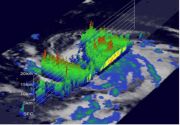
 This 3D, interactive Java Applet displayed a variety of overlying faults data sets which could be toggled on and off, along with a feature allowing the creation of a plane from three points....
This 3D, interactive Java Applet displayed a variety of overlying faults data sets which could be toggled on and off, along with a feature allowing the creation of a plane from three points.... 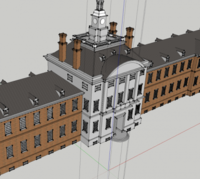 Google SketchUp was used to create a richly interactive and historically authentic 19th-century psychiatric asylum on Harvard's island in Second Life. 3D historical models of Colney Hatch and Bedlam hospitals were created. A Google Earth KMZ file was used for easy distribution and to provide supplementary information.
Google SketchUp was used to create a richly interactive and historically authentic 19th-century psychiatric asylum on Harvard's island in Second Life. 3D historical models of Colney Hatch and Bedlam hospitals were created. A Google Earth KMZ file was used for easy distribution and to provide supplementary information.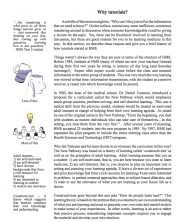
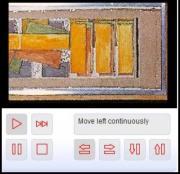 This interactivity was intended to simulate the original viewing conditions of Duncan Grant's "Abstract Kinetic Collage" (1914). Fifteen feet long and eleven inches wide, Abstract Kinetic Collage was to be viewed through the aperture of some device as it scrolled to musical accompaniment.
This interactivity was intended to simulate the original viewing conditions of Duncan Grant's "Abstract Kinetic Collage" (1914). Fifteen feet long and eleven inches wide, Abstract Kinetic Collage was to be viewed through the aperture of some device as it scrolled to musical accompaniment.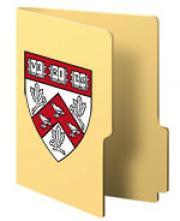 The PITF produced a 7-minute video each week, integrating American religious music, slide images from lectures, YouTube videos, webpage screenshots, and religious music videos. The videos were started while students were settling in at the beginning of class and again during the class break. At the end of the semester, these were combined to give a comprehensive overview of the course, its scope, and its trajectory.
The PITF produced a 7-minute video each week, integrating American religious music, slide images from lectures, YouTube videos, webpage screenshots, and religious music videos. The videos were started while students were settling in at the beginning of class and again during the class break. At the end of the semester, these were combined to give a comprehensive overview of the course, its scope, and its trajectory.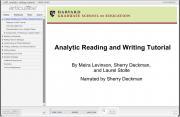 With the help of a PITF, Professor Levinson created a web-based self-paced tutorial consisting of five lessons that students could walk through at their own pace. Each section included exemplars and hyperlinks to supplement materials tailored for the particular tutorial allowing students to “teach themselves.” Among these exemplars was a complete student paper that students were able to download and use as a model.
With the help of a PITF, Professor Levinson created a web-based self-paced tutorial consisting of five lessons that students could walk through at their own pace. Each section included exemplars and hyperlinks to supplement materials tailored for the particular tutorial allowing students to “teach themselves.” Among these exemplars was a complete student paper that students were able to download and use as a model.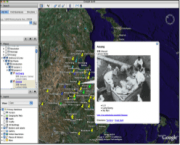 All images of artifacts were placed as markers on a Google Earth map. By clicking on the marker, you see a picture of the artifact, a description of it, and the name of the location in both English and Chinese. There was also a link that bounced back to the course website and the weekly lecture slide that corresponded with the image....
All images of artifacts were placed as markers on a Google Earth map. By clicking on the marker, you see a picture of the artifact, a description of it, and the name of the location in both English and Chinese. There was also a link that bounced back to the course website and the weekly lecture slide that corresponded with the image.... 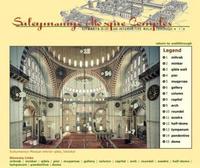 Students navigated a mosque complex using a floor plan, and could inspect photographs of each important feature. Students were able to zoom in on photographs for more detail, view annotations with important architectural terms and features, and look up terms in the course's audio glossary. These ...
Students navigated a mosque complex using a floor plan, and could inspect photographs of each important feature. Students were able to zoom in on photographs for more detail, view annotations with important architectural terms and features, and look up terms in the course's audio glossary. These ...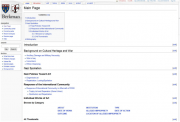
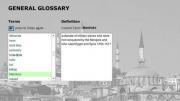 The glossary was built in Flash, and integrated into a standard course web site. The Flash application read data from XML files to generate the lists of words, then played audio files referenced by the XML. Terms could be accessed via links in the course website or through the glossary itself.
The glossary was built in Flash, and integrated into a standard course web site. The Flash application read data from XML files to generate the lists of words, then played audio files referenced by the XML. Terms could be accessed via links in the course website or through the glossary itself.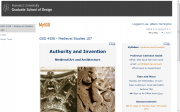 PITFs developed and implemented an experiment in pedagogy to enhance, extend, and deepen students’ engagement with and understanding of the course material by creating a comprehensive website for the course. They re-examined the use of images, introduced videos and readers, and re-designed the
PITFs developed and implemented an experiment in pedagogy to enhance, extend, and deepen students’ engagement with and understanding of the course material by creating a comprehensive website for the course. They re-examined the use of images, introduced videos and readers, and re-designed the 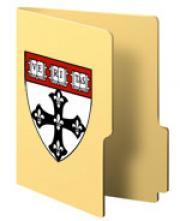
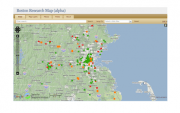 The goal of this project was to develop maps and guides for student research that would act as an archive for the future in order to better understand university/community relations.
The goal of this project was to develop maps and guides for student research that would act as an archive for the future in order to better understand university/community relations. The PITFs developed a tagging ontology and optimized 2,260 video clips for progressive download.
The PITFs developed a tagging ontology and optimized 2,260 video clips for progressive download. P
P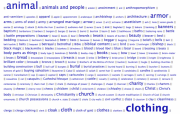 PITFs developed an online collaborative research tool that allowed students to work in teams to analyze primary sources and to create sets of searchable online notecards. Students used social computing-style tagging to annotate the cards. The Collaborative Research Tool was built using the Cake PHP framework. The user interface was updated and refined, and a larger data set of source materials was imported into the application in 2009.
PITFs developed an online collaborative research tool that allowed students to work in teams to analyze primary sources and to create sets of searchable online notecards. Students used social computing-style tagging to annotate the cards. The Collaborative Research Tool was built using the Cake PHP framework. The user interface was updated and refined, and a larger data set of source materials was imported into the application in 2009. PITFs developed a Flash comic book with 3D page turn animations.
PITFs developed a Flash comic book with 3D page turn animations. The PITF initially identified a product, Mind42, which met many of Professor Fisher’s criteria. However, questions about technical viability arose, and a decision was made to use MindJet Catalyst instead. Catalyst is a robust, web-based product that met virtually all of Professor Fisher’s needs, including an ability to convert his existing Freemind maps. In addition, MindJet offered a desktop product, MindManager, that provided Professor Fisher additional authoring features. The PITF ran some capacity tests prior to the start of the course, and assisted in managing student accounts in Catalyst. Professor Fisher implemented the pilot. Student feedback on using the mapping software as a discussion tool was mixed.
The PITF initially identified a product, Mind42, which met many of Professor Fisher’s criteria. However, questions about technical viability arose, and a decision was made to use MindJet Catalyst instead. Catalyst is a robust, web-based product that met virtually all of Professor Fisher’s needs, including an ability to convert his existing Freemind maps. In addition, MindJet offered a desktop product, MindManager, that provided Professor Fisher additional authoring features. The PITF ran some capacity tests prior to the start of the course, and assisted in managing student accounts in Catalyst. Professor Fisher implemented the pilot. Student feedback on using the mapping software as a discussion tool was mixed.